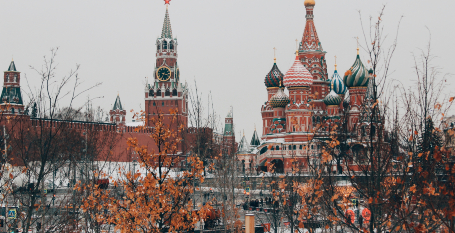Vladimir Putin has signed legislation that bans people from officially or medically changing their gender, representing a further blow to Russia’s embattled LGBTQ community.
According to reporting by the Guardian, the legislation - passed by the parliament - bans any “medical interventions aimed at changing the sex of a person”, as well as banning changing a person’s gender in official documents or public records. The only exception will be medical intervention to treat congenital anomalies.
The legislation also annuls marriages in which one person has “changed gender” and bars transgender people from becoming foster or adoptive parents.
Why is Russia so homophobic?
A quick historyIn the history of Russia, the state-sanctioned persecution of gay men appears to have begun in the 17th century.
Historians have documented accounts of both gay men and lesbians being put to death during the reign of Tsar Alexis Mikhailovich – he ruled from 1645 until 1676 and led a program of modernisation.
In 1716, Tsar Pyotr Alekseevich – Peter the Great – is recorded as banning homosexual relations in Russia’s military.
The prohibition of sex between men was strengthened by Tsar Nicholas I in 1832.
The revolution of 1917, and the rise of the Bolshevik government led to a rewriting of the country’s laws. The new Criminal Code that was adopted in the early 1920s effectively saw the legalisation of homosexuality.
However, criminalisation returned in 1933 as the Soviet government – led by Stalin – introduced provisions that punished homosexual activity with five years’ imprisonment with hard labour. It’s estimated that around 1,000 gay men were imprisoned each year under Stalin’s regime and in the years that followed.
In 1993, the government – led by Boris Yeltsin – decriminalised homosexuality. It is not currently illegal in Russia, however there is widespread persecution and discrimination.
Queer life is Tsarist RussiaAs you would expect, gay men have been part of Russian life throughout history. Small glimpses of this can be found in historical documentation through the centuries.
The Austrian ambassador, Sigismund von Herberstein, wrote about his travels to Moscow in 1517 and 1526. He noted that homosexuality was prevalent among all social classes.
George Tuberville, an English poet, visited Moscow in 1568 and noted the open homosexuality of the Russian peasants.
Adam Olearius, an ambassador for Germany in 1634, reported that homosexuality among men existed on all levels of society and was not treated as a crime.
Ivan IV Vasilyevich – who became the first Tsar of Russia and more commonly known as Ivan the Terrible – is believed to have had several male lovers.
Dmitry Ivanovich – who ruled as Tsar from 1605 until 1606 – is believed to have been a gay man. When he was killed by his rivals, his body was dragged through the streets alongside the man described as his lover.
Grand Duke Sergei Alexandrovich Romanov served as the Governor of Moscow from 1891–1905. His homosexual relationships were widely discussed in Moscow.
Saint Petersburg and Moscow both had gay brothels, along with many public places where men would buy and sell sexual services for or from other men.
Despite the prohibitions against homosexuality that began to be introduced from the 17th century onward, we have numerous examples of gay men thriving during the reign of the Tsars – particularly writers and composers who were celebrated for their talents.
The role of religionAs public opinion became increasingly influenced by the teaching of the Eastern Orthodox Church, homosexuality began to become associated with corruption, decadence, and immorality.
Putin’s propaganda laws
In 2013, the Russian parliament passed a law banning the distribution of “propaganda of non-traditional sexual relationships” to minors - a new shift in targeting LGBTQ people and embedding systemic state-sanctioned homophobia.
Much of the support for the propaganda law comes from the Russian Orthodox Church and other conservative groups.

